Procedure OUT Receipts
General
The central collection point for documents to be exported is the Export Container. This is where the current processing status of the EDI documents of the various message types is managed.
Regardless of the individual specific setups and contexts of the individual documents, here is a brief description of the steps that are followed when creating an OUT document up to the file export:
1. Setup of message names, number series, etc. in the EDI setup
2. Setting up the export paths in the EDI setup (NOTE: Test paths are only used if "Database is test database used" is set in Fashion setup)
3. Setting up the EDI partner "Create OUT Document"
4. Manual or automatic creation of an EDI export item from NAV internal documents (e.g. OUT PRICAT when a sales order is released)
a. Before creating the EDI export item, it is checked whether all facilities are available and whether an export item can be written to the EDI message type at all
b. If no errors are thrown, the EDI export item is created.
c. The status of the export container is set to "To be created"
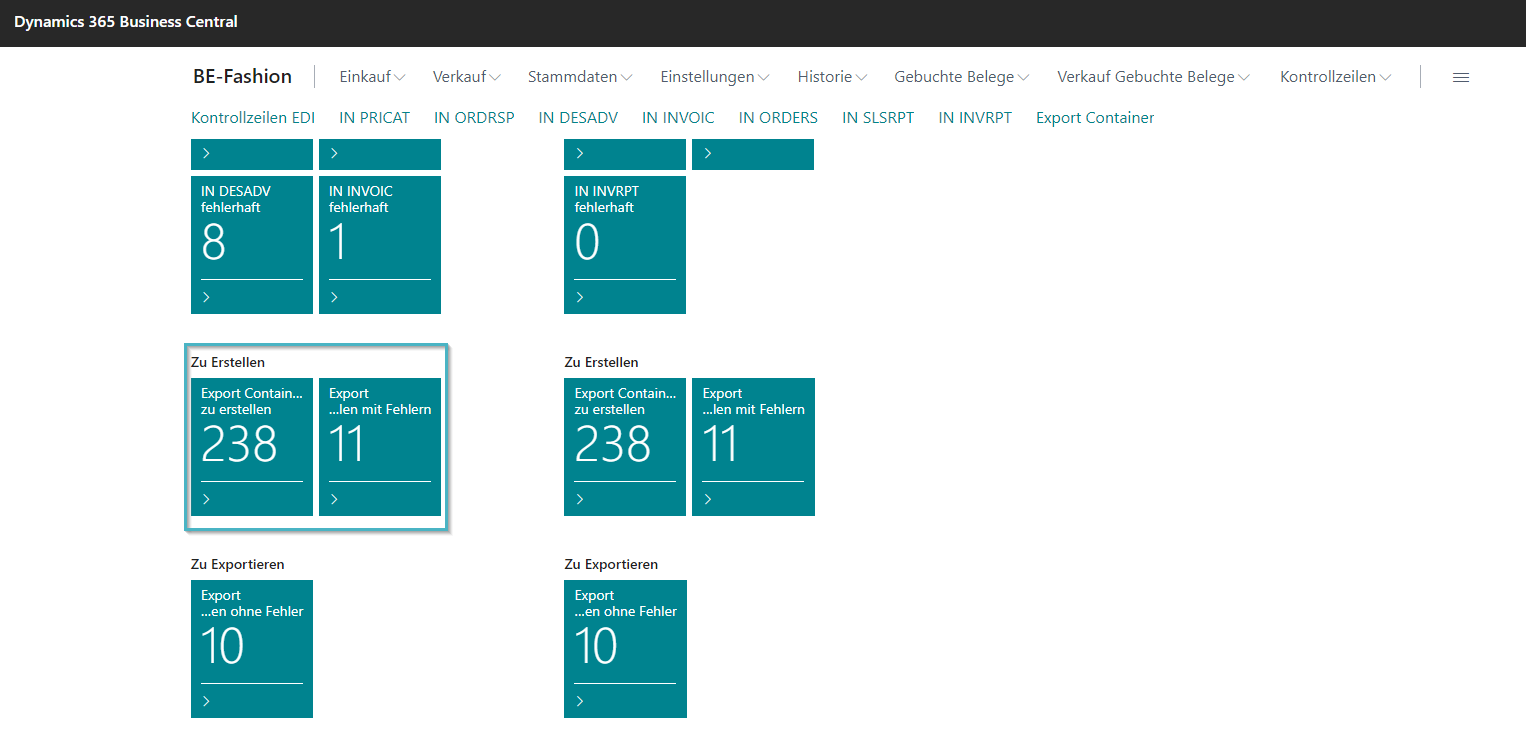
- Once set up, automatic processing is carried out via the NAS codeunits (see 1.5). However, manual further processing is also possible:
a. In the Export Container, the EDI documents of the currently selected entries can be created using the "Create Export Document" function.
b. If errors occur, this is marked with the "Error" flag and an error text. The error text links to an error table in which all errors that have occurred are listed.

c. If there are no more errors, the EDI document can be created. The corresponding entry in the "Export Container" is set to the status = "To be exported".
d. The EDI message is now written to a file using the "Export Documents" function. This function can also be found on the individual EDI documents.
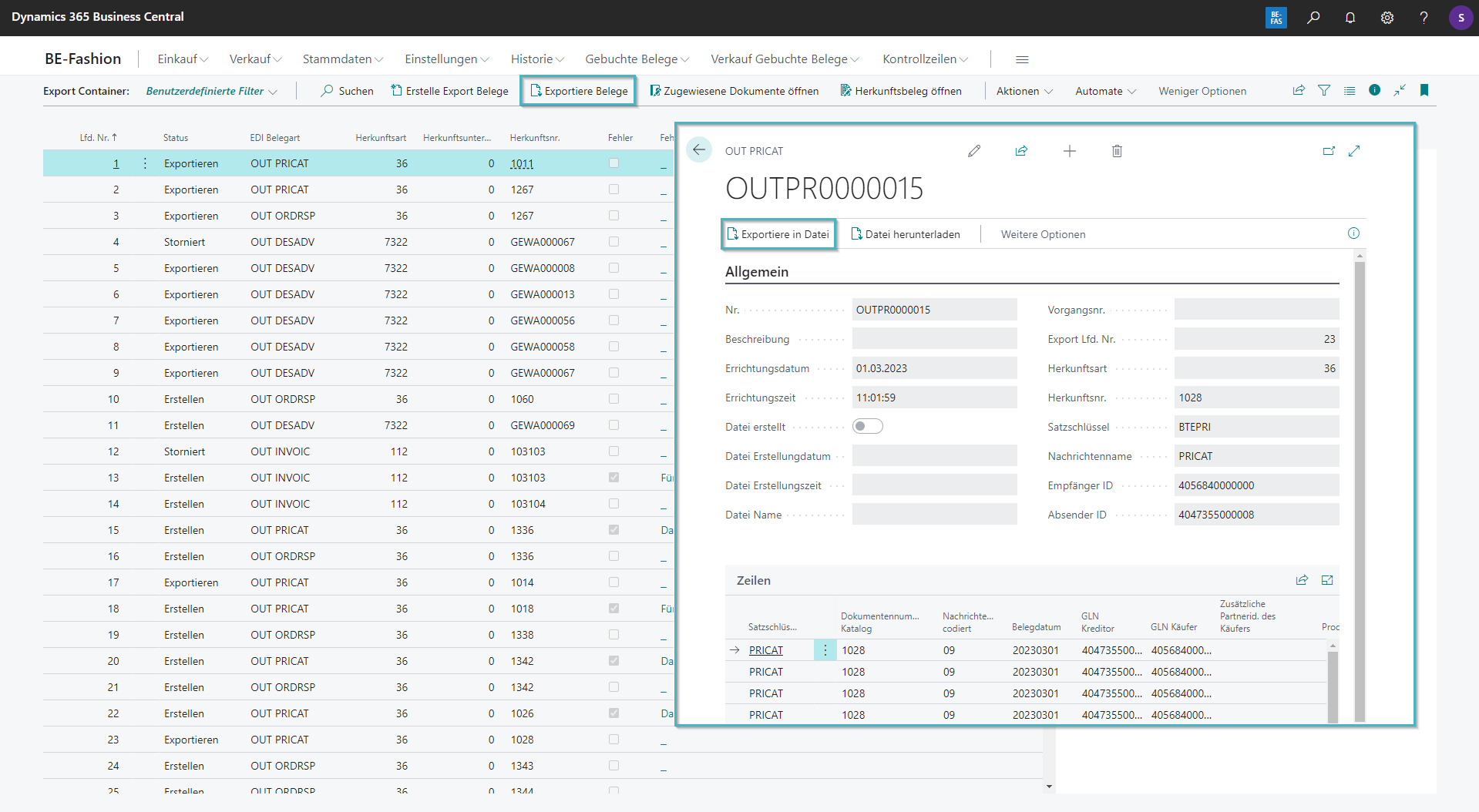
e. After exporting, the export container is set to Status = Processed. The export data (date, time, file path) and a transaction number are stored in the EDI document. The transaction number identifies an entry in the EDI transaction journal.
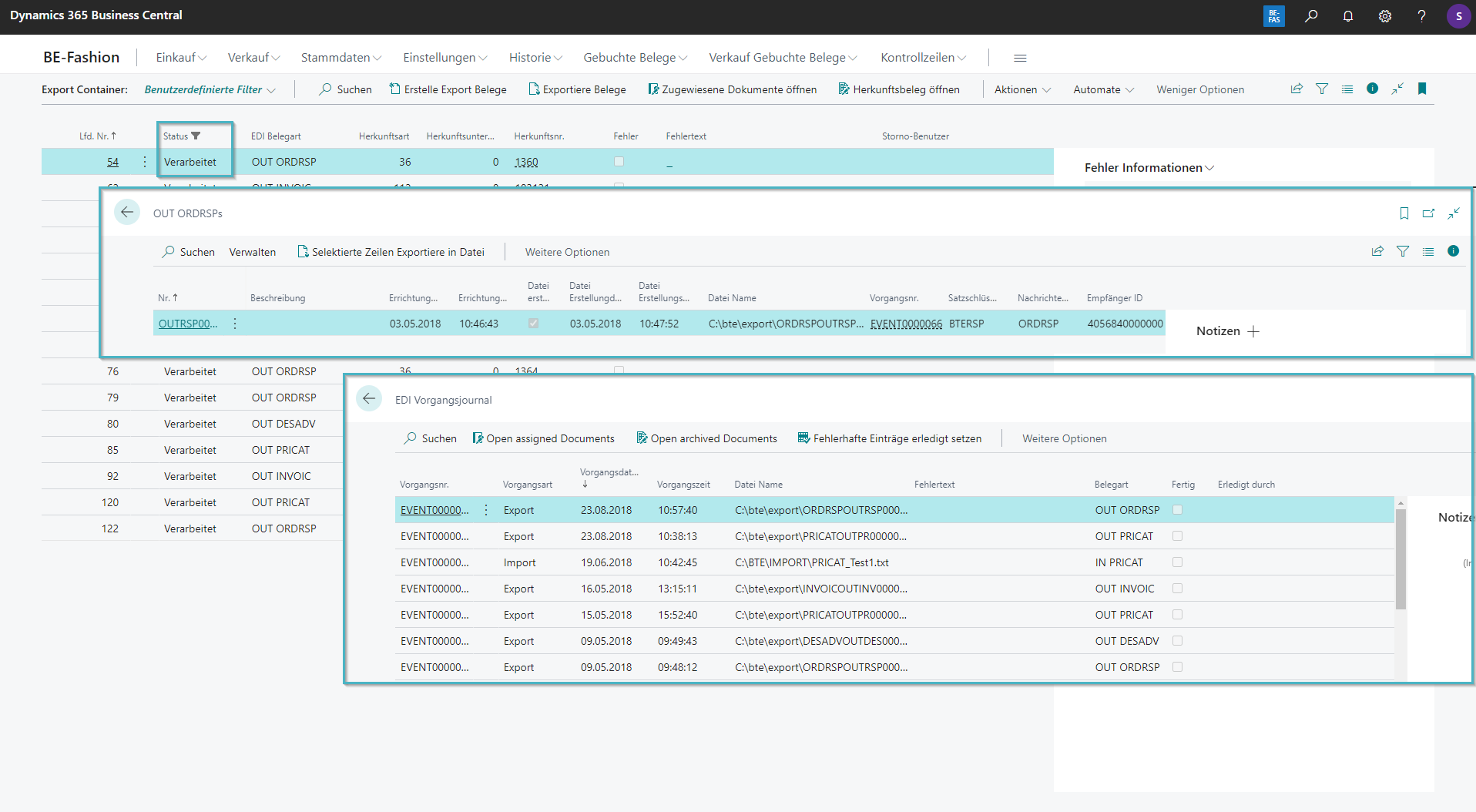
f. If an EDI document is cancelled (it can be cancelled at any processing stage), the status is set to "Cancelled".
NOTE: For OUT SLSRPT and OUT INVRPT, OUT SLSRPT items and OUT INVRPT items are first created before the "Export Container" (point 3) is created. The NAS CU 5407706 – Export Schedule Mgt. runs at periodic intervals and creates "EDI Export" documents for the assigned "EDI Partner". These documents are then used to create "Export Containers". Further processing is carried out as described.
Steps for creating each message type
OUT ORDERS
- Entry of an purchase order
- When validating
- "Eink. From vendor no."
- "Order type (variable)"
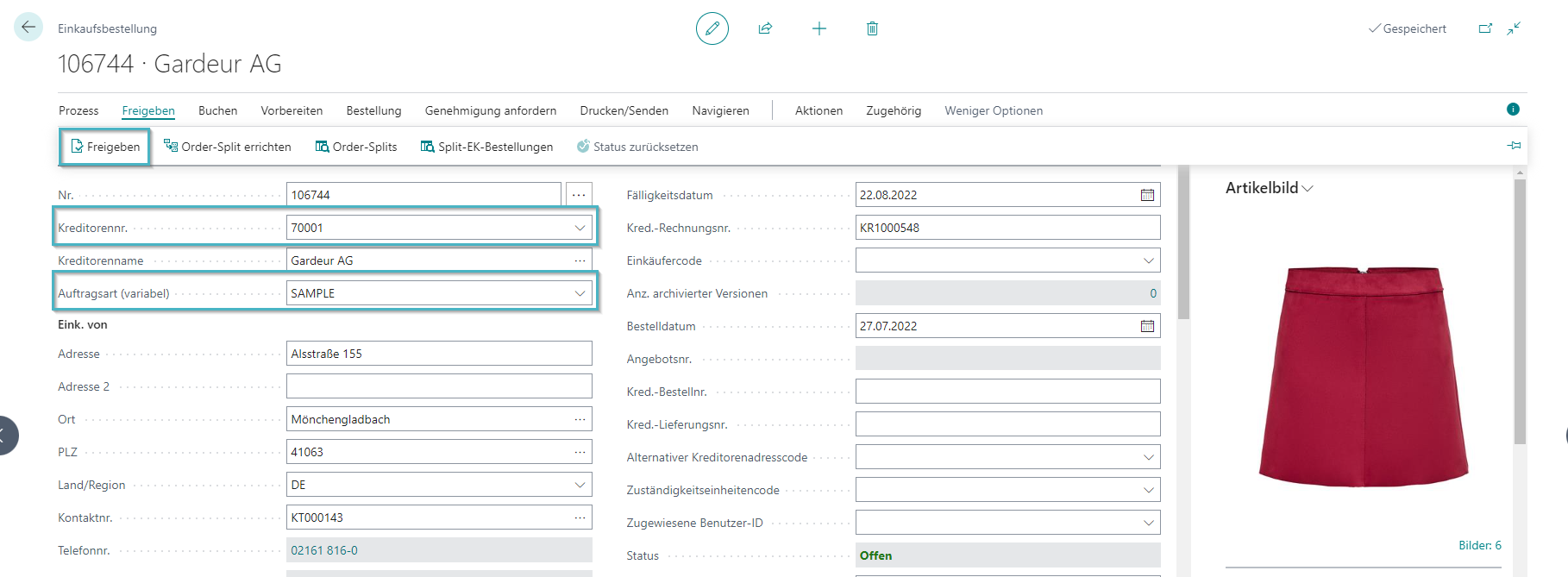
- When the purchase order is released, it is checked whether an OUT ORDER can be generated if necessary facilities are available
- The "Export Containers" has the following values after creation
- "Status" = "Status"::"Create"
- "EDI document type" = "OUT ORDERS"
- "Type of origin" = 38
- "Subspecies of origin" = 1
- "Origin No." = Document No. purchase order

OUT SLSRPT
- Bei Verbuchung der Artikelbuchblattzeile wird, falls notwendigen Einrichtungen vorhanden sind, ein „EDI Export Posten“ mit der „EDI Export Postenart“ = „EDI Export Postenart“::“OUT SLSRPT“ erstellt
- Alternatively, you can create "EDI Export Item" with "EDI Export Item Type" = "EDI Export Item Type"::"OUT SLSRPT" on the vendor card via button (actions "Initialize OUT SLSRPT item") if the facilities are available.

- The NAS CU 5407706 – Export Schedule Mgt. runs at periodic intervals and creates "EDI Export" documents for the assigned "EDI Partner" documents
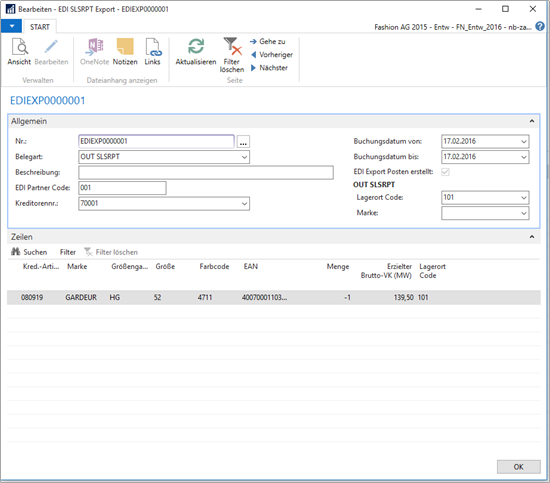
- "Export Container Items" are created from the "EDI Export" documents
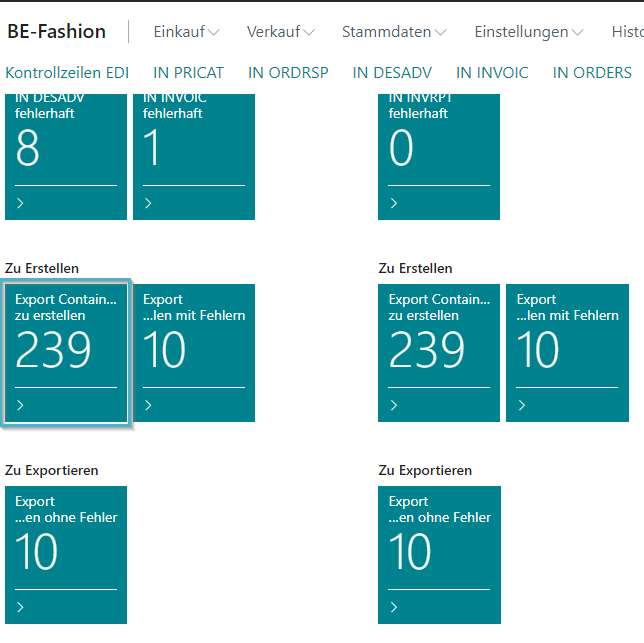 image.png
- The "Export Containers" has the following values after creation
- „Status“ = „Status“::“Erstellen“
- "EDI document type" = "OUT SLSRPT"
- "Type of origin" = 5407711
- "Subspecies of origin" = 1
- "Origin No." = Document No. of the "EDI Export" document
image.png
- The "Export Containers" has the following values after creation
- „Status“ = „Status“::“Erstellen“
- "EDI document type" = "OUT SLSRPT"
- "Type of origin" = 5407711
- "Subspecies of origin" = 1
- "Origin No." = Document No. of the "EDI Export" document

OUT INVRPT
- When posting the article journal line, if the necessary setups have been made, an "EDI Export Item" is created with the "EDI Export Item Type" = "EDI Export Item Type"::"OUT INVRPT"
- The NAS CU 5407706 – Export Schedule Mgt. runs at periodic intervals and creates "EDI Export" documents for the assigned "EDI Partner" documents
- "Export Container Items" are created from the "EDI Export" documents
The further processing of the export containers is the same for all OUT documents and is summarized under General Procedure OUT Documents .
OUT PRICAT
- An OUT PRCAT can be created manually or automatically from several places in the system.
- Manual creation is done via a sales quote.
- In order to be able to create a complete price catalogue for certain article categories/seasons/etc., the function "build PRICAT catalogue" can be used.
- The "PRICAT Catalogue" box is ticked on the retail offer. It has no controlling property, but only serves as information for the user. It can also be set manually, e.g. if rows are manually created for a PRICAT.
- It can also be determined whether the PRICAT should be built and exported directly afterwards (only if the test is error-free)
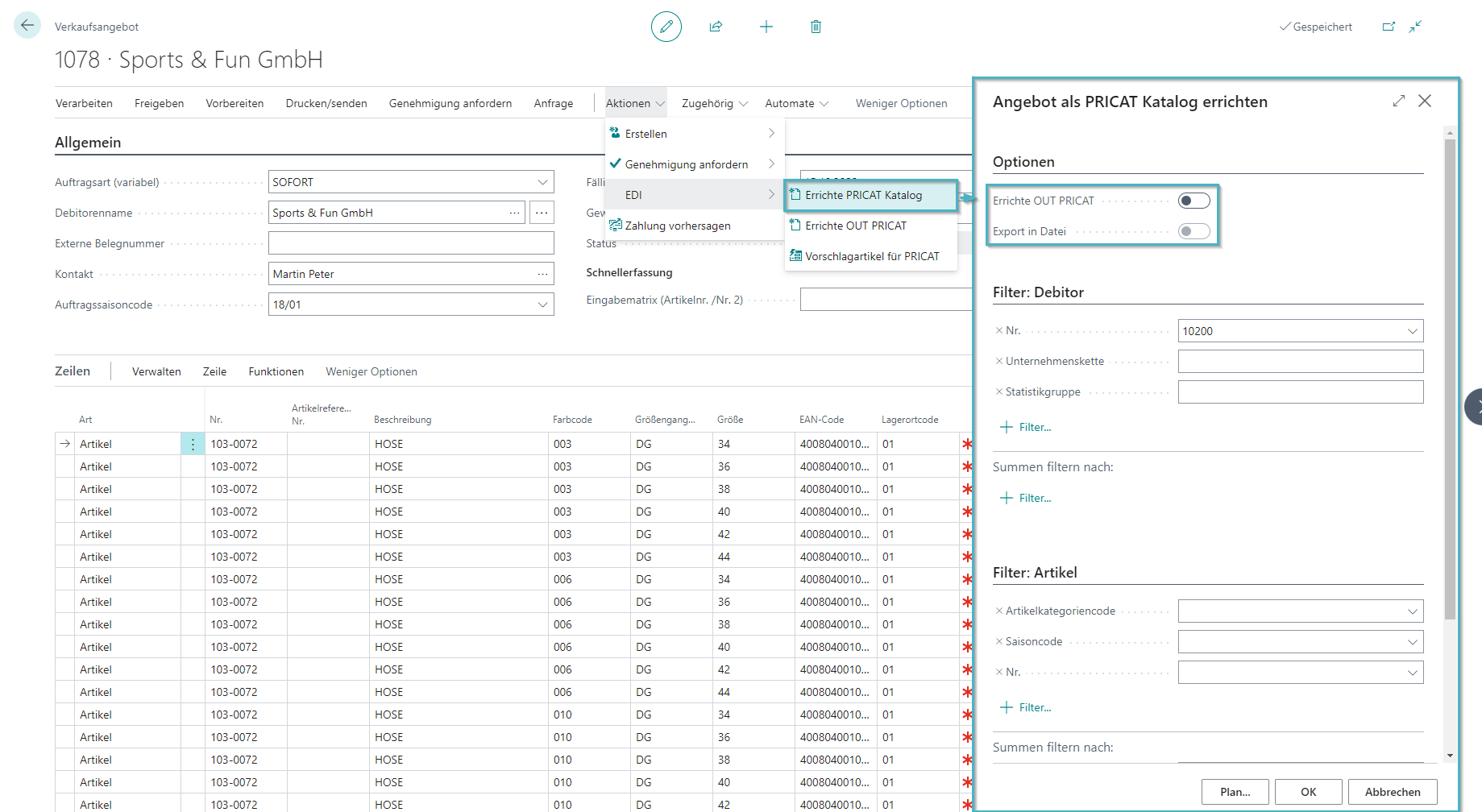
- To create quote lines for a PRICAT based on previous sales or stock transfers, you can use the "Suggestion item for PRICAT" function
- Depending on a posting period, all item variants for the "Sales to Customer" specified in the sales quotation are searched for in the value ledger entries
- All variants are then created with the quantity 1 in the sales line. The prices are determined with the help of standard pricing.
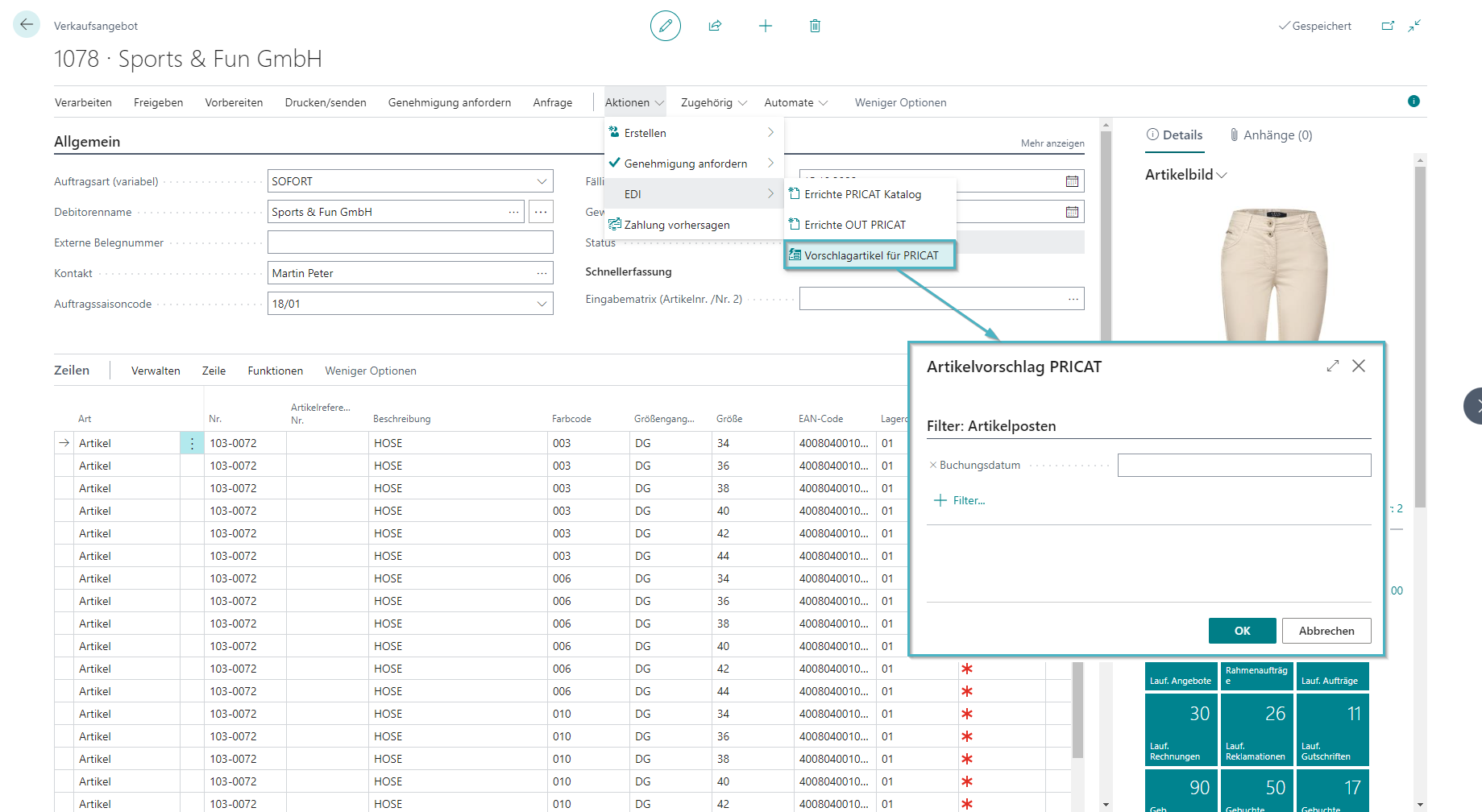
- The "Create OUT PRICAT" function can be used to create the OUT PRICAT from a retail offer.
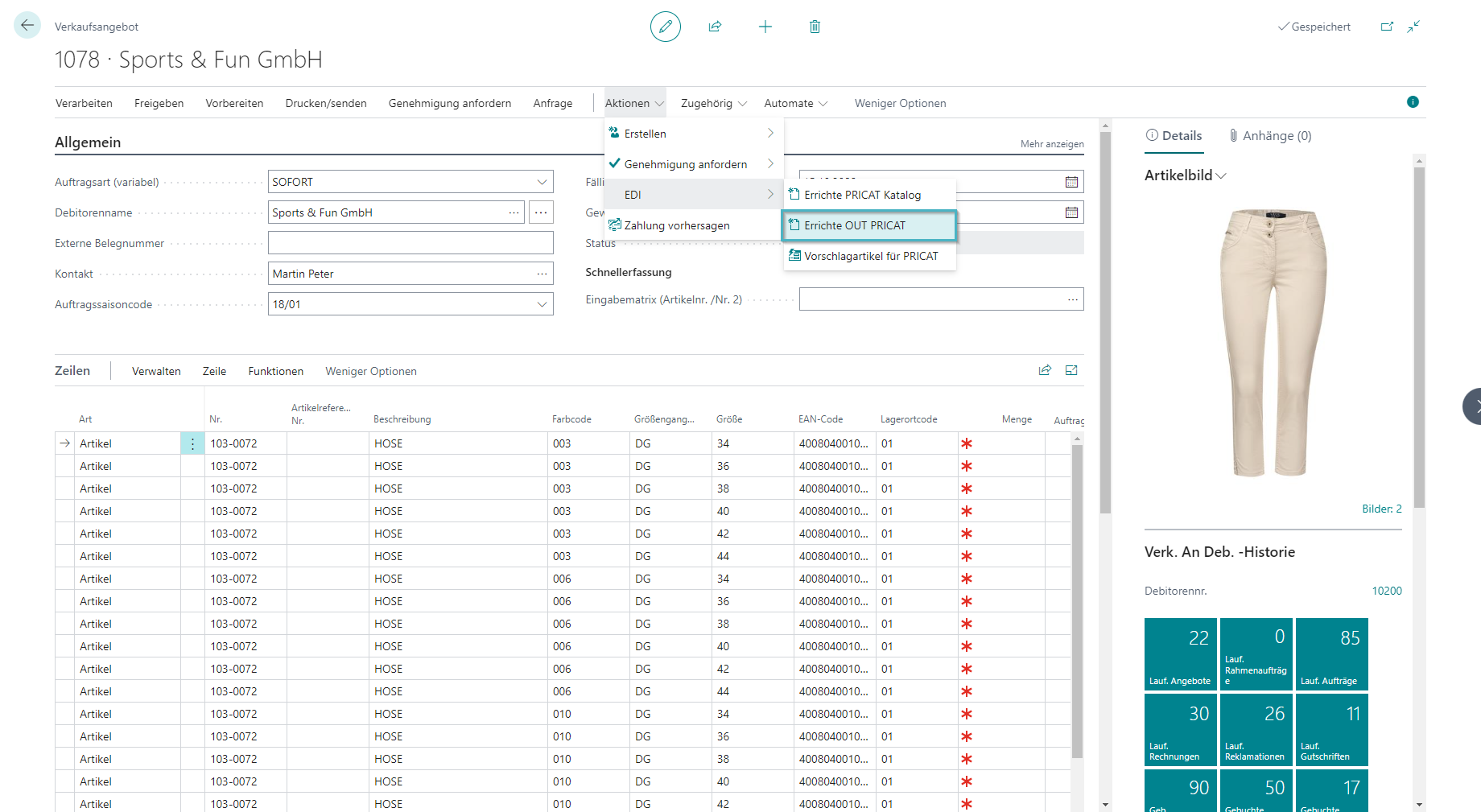
- With the help of the "OUT PRICAT" action under NAVIGATE, the export container with all associated OUT PRICAT entries is displayed (cancelled as well).
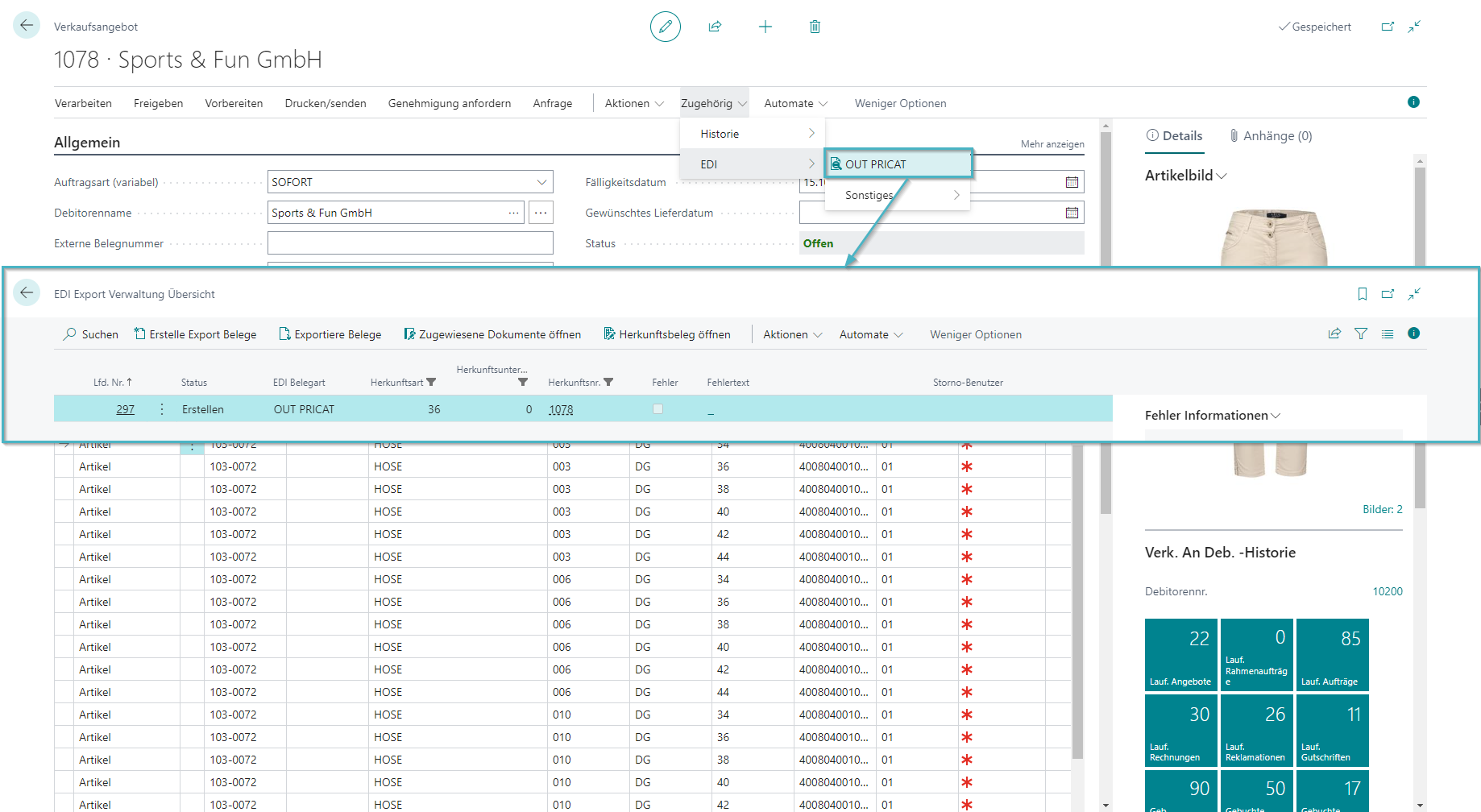
- Depending on the setup in the EDI Partner under "Order Types", an OUT PRICAT is automatically created after a sales order has been released or the goods issue has been posted.
-
The automatic and/or manual creation from a sales delivery or the sales archive is already provided for in the EDI export routine in the source code, but must still be triggered at the appropriate points in the system, if desired.
-
The "EDI Export Container" has the following values after creation
- "Status" = "Status"::"Create"
- "EDI document type" = "OUT PRICAT"
- "Type of origin" = 36
- "Subspecies of Origin" = 0 (Offer) , 1 (Order)
- "Origin No." = Document No. of the offer/order
OUT ORDRSP
- Entry of a sales order and validation of the "Verk. to debtor no."
- The "EDI Partner" belonging to the customer must have set the "create OUT ORDRSP" indicator
- In addition, the order type of the sales order must be maintained in the "Order types setup" at the EDI partner, and the time at which the OUT ORDRSP is to be created must be defined under "Create OUT ORDRSP"
- Depending on the setup, the sales order must now be released or the goods issue must be created and released so that the process for creating the OUT ORDRSP is started
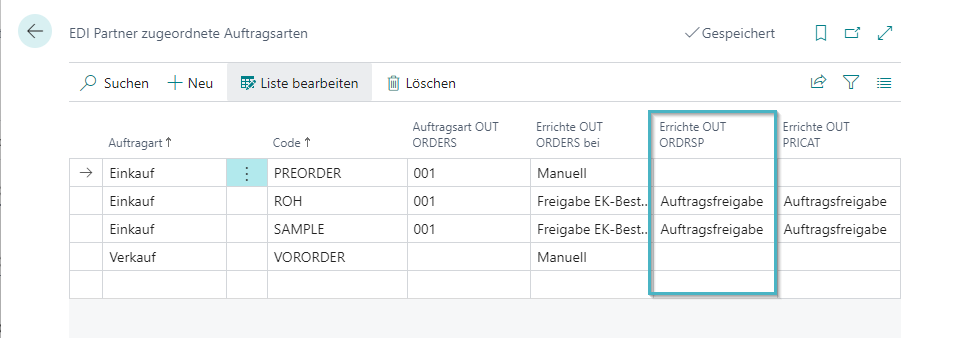
OUT DESADV
OUT INVOIC
- An OUT INVOIC arises from a posted sales invoice or a posted sales credit memo.
- This can be done manually via the "Create OUT INVOIC" function directly on the card of the issued retail invoice or retail credit.
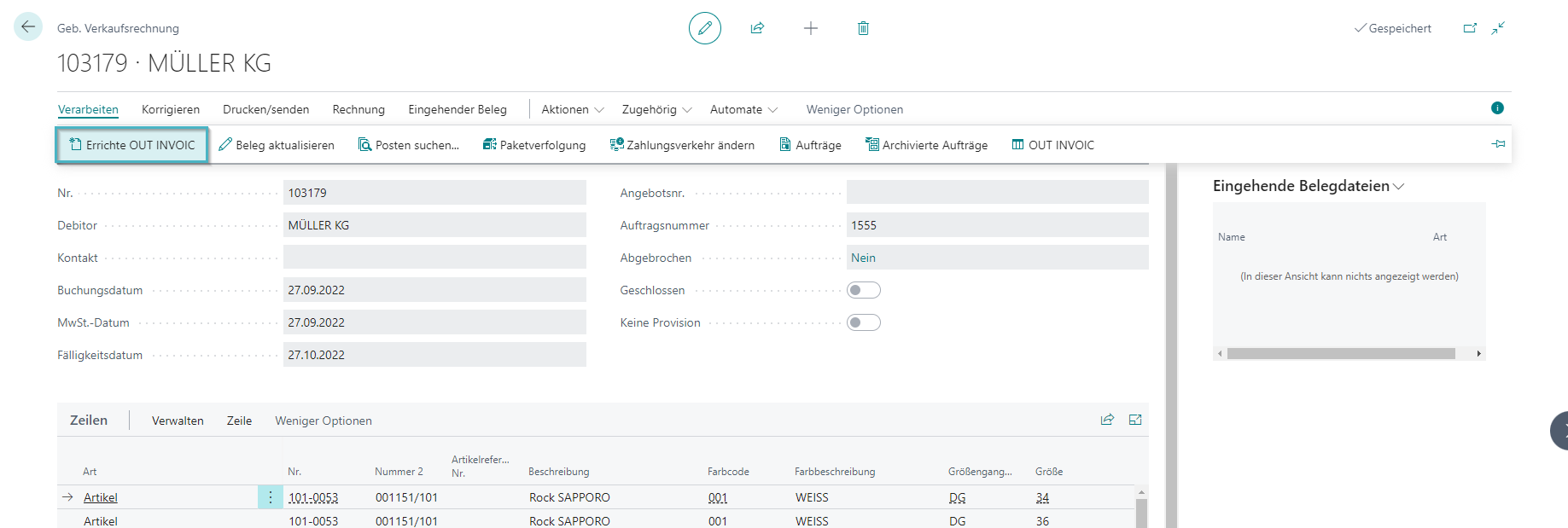
- The automatic creation of an INVOIC takes place when a sales invoice or sales credit note is posted
- The result is the creation of an "EDI Export Item". The "Export Container" has the following values after creation:
- „Status“ = „Status“::“Erstellen“
- "EDI document type" = "OUT INVOIC"
"Type of origin"
- 112: born VK-invoice
- 114: born VK credit note
- „Herkunftsunterart“ = 0
- "Origin No." = Document No. of the born VK-Rechnung/geb.. VK Credit








 image.png
- The "Export Containers" has the following values after creation
- „Status“ = „Status“::“Erstellen“
- "EDI document type" = "OUT SLSRPT"
- "Type of origin" = 5407711
- "Subspecies of origin" = 1
- "Origin No." = Document No. of the "EDI Export" document
image.png
- The "Export Containers" has the following values after creation
- „Status“ = „Status“::“Erstellen“
- "EDI document type" = "OUT SLSRPT"
- "Type of origin" = 5407711
- "Subspecies of origin" = 1
- "Origin No." = Document No. of the "EDI Export" document





